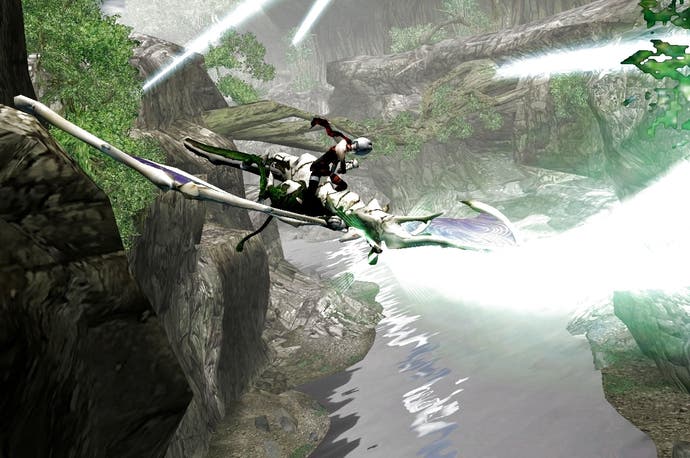Flying through life: Meet the man behind Panzer Dragoon
Yukio Futatsugi stumbled into the world of games, but he's left it a richer place.
Chance is a funny thing. The road we walk through life is filled with forks that force us to choose between one route and another, and with every turn the final destination becomes less and less clear. You know, a little like in OutRun.
Although Yukio Futatsugi was potty for games ever since he was in junior high school in Kobe, Japan, and fell in love with Pong and Space Invaders while spending a year in San Francisco at primary school age, he very nearly did not become the creator of Panzer Dragoon. He very nearly became a filmmaker.
"In high school I would make movies with my friends, on 8mm, like indie movies," says Futatsugi, 43, as we chat in a tiny, bare backroom in the Kyoto venue where the inaugural BitSummit is drawing to a close.
"I guess I liked to try to make the things I was into. When it came time to choose a university course I had the choice between film and videogames, and I went with videogames, because I thought the world of games was about to become interesting. If I'd chosen film my life might have been totally different!"
Well, yes - and so would ours. An exhilarating 3D shooter that launched with Sega's ill-fated Saturn console in 1995 (although it just missed the Japanese Saturn launch in 1994), Panzer Dragoon took as its template classic Sega flying shooters Space Harrier and After Burner and added graceful and groundbreaking FMV cut-scenes, on-rails action and dragons.
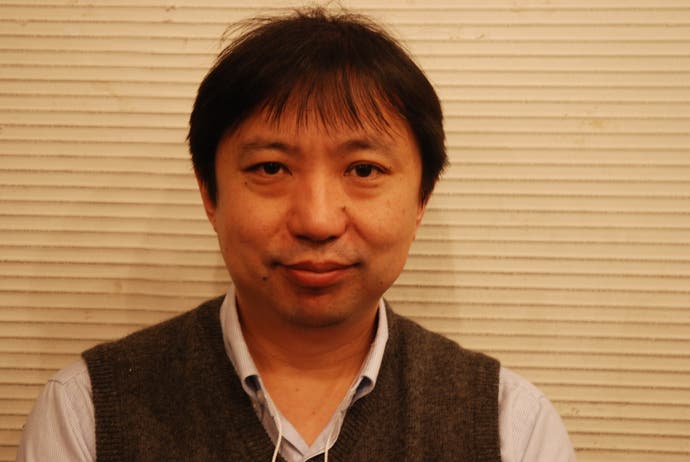
But for Panzer Dragoon to exist, chance was to strike again and again.
Before graduating from his computer science course at the University of Tsukuba in Tokyo, the opposite side of Japan from his native Kobe, Futatsugi started applying for jobs, as all undergraduate students in Japan are required to do, since most large corporations do their recruiting en masse at graduation time.
"I wanted to work at a game company, so I applied to Konami, Namco and Sega," says the soft-spoken developer, dressed like a geography teacher in a shirt and sleeveless V-neck sweater. "Sega was the first to offer me a job, and it was my first choice. So even though Konami was also considering my application, I cancelled it and joined Sega."
Futatsugi's first month at Sega, in 1991, was spent on "menial tasks" such as assisting with the Game Gear version of Shinobi, before he was assigned to a department to learn how games are made. After a year or two, Sega divided its development staff into new teams and asked for proposals for games to consider for its forthcoming Saturn console, Sega's first system with an integrated CD-ROM drive and capabilities for advanced 3D graphics.
"I handed in several proposals, one of which was Panzer Dragoon," says Futatsugi. "I'd only been there about two years, but they accepted my proposal and put me in charge of the project. Just like that I was making Panzer Dragoon for the Saturn launch."
"I'd only been there two years, but they accepted my proposal and put me in charge of the project. Just like that I was making Panzer Dragoon for the Saturn launch."

Futatsugi was just 23 at the time he took over Team Andromeda, and 25 when Panzer Dragoon came out in 1995. "It was a difficult project. All the programmers and designers were above me in the company but I had to tell them what to do, which was tricky. But I was young, so I could be stubborn."
The game concept originated as a 3D shooter, but it was only while pondering on what kind of vehicle the player would ride that Futatsugi and art designer Manabu Kusunoki decided not to have a vehicle at all - but a dragon.
"A dragon seemed like it would be fun, and it would show off the 3D capabilities of the Saturn to maximum effect, because while a spaceship is made of solid metal, a dragon has moving body parts and it looks different from every angle."
Futatsugi's team went on to make two sequels, while spin-offs appeared on Game Gear, Tiger's handheld R-Zone and, much later, the original Xbox. Panzer Dragoon Zwei improved upon the gameplay mechanics of the first game, adding new attack abilities, multiple routes and evolving dragons. But it was the third proper game, Panzer Dragoon Saga (or Azel: Panzer Dragoon RPG as it was known in Japan) that really expanded the premise. No longer on rails, Saga combined fly-by shooting action with RPG elements in a free-roaming world. Until its release in 1998 its production threatened to break Futatsugi numerous times.
"Saga was the hardest Panzer Dragoon game to make," he trembles. "I had no idea it would be so challenging. Making areas in full 3D with free movement and full voice - that sort of thing didn't really exist then. We had to figure out how to integrate the shooting elements into a different sort of game."
During the making of Saga, Andromeda lost two production staff - one to an accident and the other to suicide. "All we could do was carry on and finish the game - it was out of my hands," recalls Futatsugi sombrely. "Part of me did want to stop though. That was definitely the toughest project I've ever worked on. Personal relationships became strained. The stress was overwhelming."
By the time Saga came out, Saturn was a spent force. The technologically superior Sony PlayStation had stolen its market share, and Sega's Dreamcast was on the horizon. In any case, the Saturn had sold only moderately in Japan and downright abysmally in the West, where the Mega Drive had conversely held a stronger position. The console was doomed from the start, and sales of Saga suffered as a result.
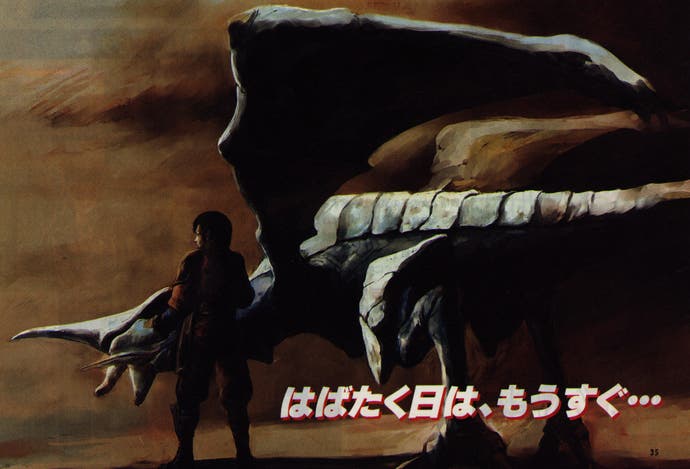
"I think it was a mistake to release the 32X at the same time as the Saturn," says Futatsugi, referring to the peripheral that could turn the Mega Drive into a (horribly underpowered) 32-bit system for a lower price than a Saturn console. "It was a bad way to launch a new system."
Futatsugi took his leave of Sega. He spent a year at Konami, his original second choice, where he helped with Ring Of Red at the invitation of ex-Sega staffer Kentaro Yoshida. (Coincidentally, Yoshida is now studio director at Q-Games, the Kyoto-based developer behind BitSummit.) He then moved on to Sony, where he made just one game, the Japan-only PS2 title Genshi No Kotoba.
"It was a very Sony-esque casual game," says Futatsugi. "I also had an idea for a shooter at that time, and I regret not making that instead."
Futatsugi's next home was another platform-holder: Microsoft. Having been invited to join the company, he helped a little with the game Magatama for a month or two and then landed a successful pitch with Phantom Dust.
The production of Phantom Dust wasn't totally straightforward, since the team's mixed heritage - a jumble of onetime members of Square, Namco, Sega and so on - meant that there was no common culture; and its release at the end of Xbox's short life in Japan was unfortunate. Nonetheless, Futatsugi was happy with the game, as were many of those who actually played it.
He was then made a manager, overseeing early 360 titles such as Blue Dragon, Lost Odyssey and Ninety-Nine Nights. But while he enjoyed working for Microsoft, Futatsugi was bored by management. He wanted to get his hands dirty once again - and that's when he started talking with Mineko Okamura, a producer originally from Sega who had worked on Rez and Space Channel 5 before joining Microsoft and working alongside Futatsugi on Ninety-Nine Nights.
"We started talking about games we'd like to make," says Futatsugi. "We ended up writing a game proposal on our days off and took it to Nintendo, to present it to (Satoru) Iwata. He said he'd like to make the game but said we first had to form a company, so we quit Microsoft and set up Grounding."
With a mission to make simple but addictive games, Grounding Inc - founded in 2007 by Futatsugi, Okamura, art director Noboru Hotta and "external director" Toru Hashimoto and based in Tokyo's Shibuya Ward - released its first games in 2009: WiiWare "board game" Pop-Up Pursuit and DSiWare title The Royal Bluff. 3DS eShop action game Sakura Samurai: Art Of The Sword followed in 2011.
"I think it was a mistake to release the 32X at the same time as the Saturn. It was a bad way to launch a system."
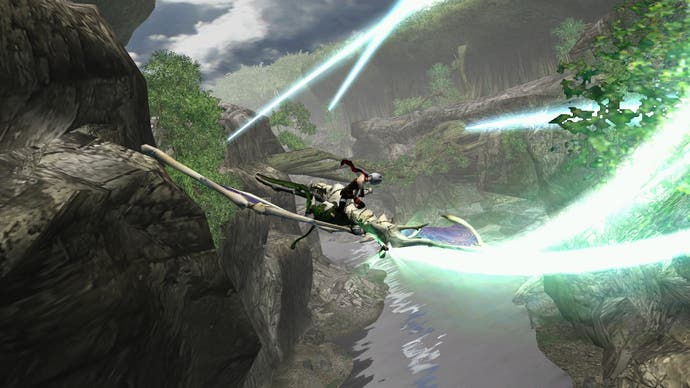
And in between those titles, chance struck again. As Microsoft prepared to launch its Kinect system, it began calling on Japanese developers to partner up. The strategy seemed twofold: to bolster Xbox's non-existent user base in Japan by showing good faith, and to recruit the sort of quirky gameplay ingenuity that Japan has in spades and that could make Kinect sing.
Along with PaRappa The Rapper creator Masaya Matsuura's NanaOn-Sha and Suda51's Grasshopper Manufacturer, Grounding was announced at Tokyo Game Show 2010 as a partner to make Project Draco, later rechristened Crimson Dragon.
An obvious return to Futatsugi's roots, Crimson Dragon is an on-rails dragon-mounted shooter with RPG elements. During a private demonstration at that year's TGS, I saw the game with my own eyes, and it looks breathtaking - one of the few Kinect games I've ever actually wanted to play.
But after apparently poor sales for NanaOn-Sha's Haunt and Grasshopper's Diabolical Pitch, Crimson Dragon has been shelved indefinitely, with rumours suggesting Grounding may be adding controller support to widen the game's appeal. While Futatsugi won't reveal any details, he insists the game is close to a release.
Futatsugi seems to be enjoying his newfound freedom as an independent developer, tempered though it is by risk. He says that although it can be taxing to have to bow to the desires of the publisher for whom he is developing a game, the flipside is that Grounding can make and publish an iPhone game without ever consulting anyone outside the company - right now it is making Machikoro, an iOS version of the physical board game of the same name, also made by Grounding.
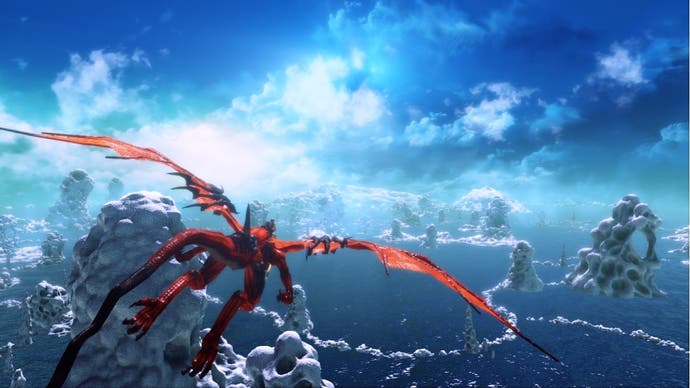
Yep, the guy who made Panzer Dragoon also makes actual board games on actual boards. What are the chances?
Grounding's other projects are top secret, though Futatsugi hints that he may be working on something for Wii U and/or Xbox. However, Futatsugi says that mobile is his current passion and the direction Grounding may take in future.
"iPhone is already on par with the PSP in terms of power, and iPhone 6 will surely be more powerful still. It may even compete with the 360, and people carry them everywhere they go," he says. "I'd like to find a way of playing that really suits the portable nature and make lots of games for that."
Looking back over his career, Futatsugi seems to appreciate the chances he's had. He says he is grateful if his games have influenced others - don't forget, Panzer Dragoon's immersive cut-scenes and rich landscapes predated Final Fantasy 7 by two years - and he speaks of the importance of choosing projects based on the people who will make up the team.
"If you have a good team of people around you, you can pretty much do anything," he says. "I used to want to do all sorts of things by myself, but I learned that it's better to draw on the talents of people around you and create something that equals more than the sum of its parts.
"When you're making a game, all sorts of problems arise, but by working together you can find a solution. Working with other people can be difficult, but it brings infinite potential."
